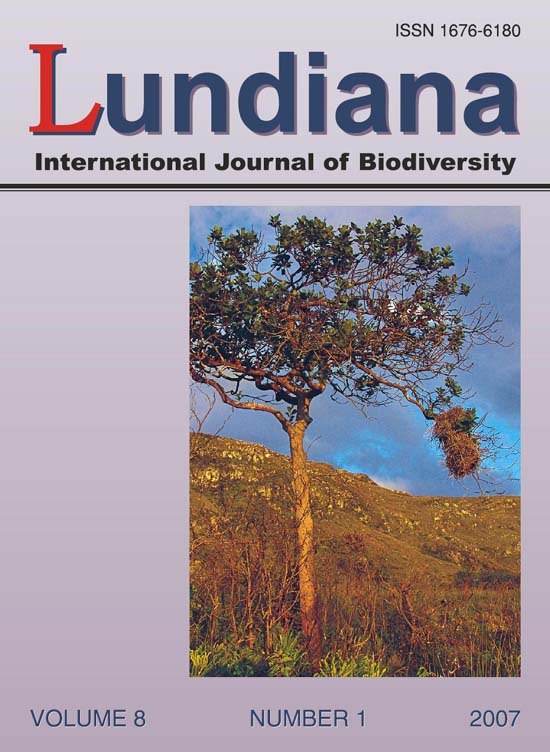Small mammal ecology in an urban Atlantic forest fragment in southeastern Brazil
DOI:
https://doi.org/10.35699/2675-5327.2007.23171Keywords:
small mammals, secondary forest, community ecology, population dynamics, altitudinal forestAbstract
We conducted a capture-mark-release study of small mammals in an urban forest fragment at the Parque das Mangabeiras, in the city of Belo Horizonte, southeastern Brazil. Four marsupials — Didelphis albiventris Lund, Gracilinanus agilis (Burmeister), Marmosops incanus (Lund), Philander frenatus (Olfers) — and four rodents — Sciurus aestuans Linnaeus, Akodon montensis Thomas, Rhipidomys mastacalis (Lund) and Mus musculus Linnaeus — were found between March 2003 and February 2004. The most abundant species were M. incanus and S. aestuans, representing respectively 50% and 20% of the individuals recorded. Terrestrial habits were detected for A. montensis and D. albiventris, scansorial habits for G. agilis, M. incanus, P. frenatus, and S. aestuans, while R. mastacalis was exclusively arboreal. There was positive correlation between rainfall and population abundance for D. albiventris, and positive correlation between recruitment rates and rainfall for M. incanus. Rapid turnover rates suggested short residence time for most species. Three reproductive patterns were identified: prolonged reproduction during both seasons in R. mastacalis, reproduction during the dry season in G. agilis, and reproduction during the wet season in the remaining species. Only individuals of D. albiventris, M. incanus, R. mastacalis, and S. aestuans were detected across the paved road that runs through the fragment, suggesting that the road may be a barrier to the other species.
Downloads
Published
Issue
Section
License

This work is licensed under a Creative Commons Attribution-NonCommercial 4.0 International License.

